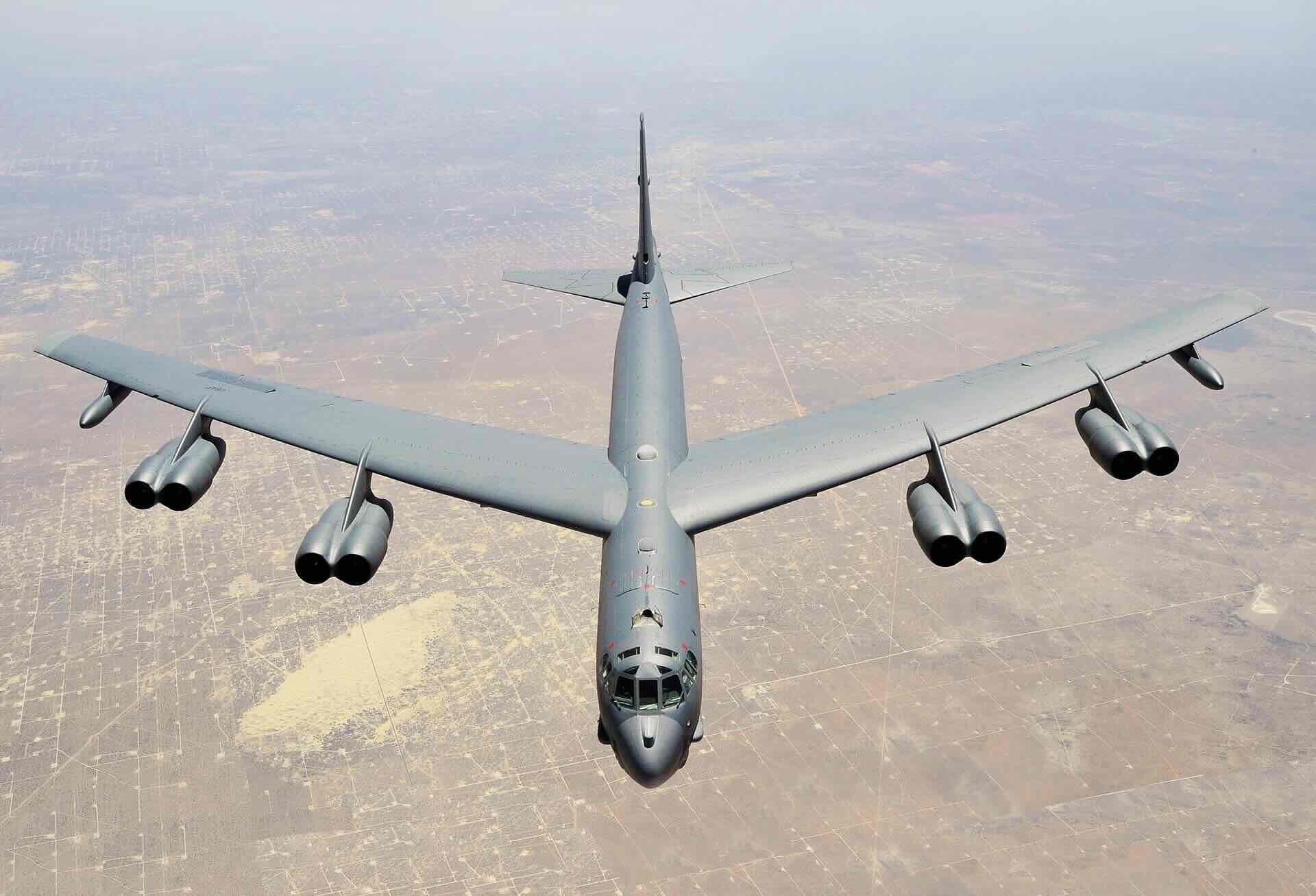


The long-planned drill tests the procedures, communications links and decision-making that underpin U.S. nuclear deterrence, and is designed to assure allies while demonstrating readiness across the enterprise.
Global Thunder is a recurring, command-led exercise that rehearses the operation of the U.S. strategic triad: land-based intercontinental ballistic missiles (ICBMs), ballistic-missile submarines, and strategic bombers. Alongside these forces, the exercise stresses the command-and-control architecture that connects national leadership to deployed units, including airborne command posts and dispersed ground nodes. STRATCOM does not publish a full order of battle while the exercise is in progress, but previous iterations have featured B-52H Stratofortress and B-2A Spirit bombers, E-6B Mercury “TACAMO” aircraft, E-4B “Nightwatch” airborne command posts, and large-scale tanker support.
Air activity typically includes “generation” drills to ready aircraft, mass launches and minimum-interval take-offs to practise rapid dispersal, and long-range profiles with aerial refuelling. Command-and-control aircraft simulate the relay of presidential directives and Emergency Action Messages across multiple pathways, including very-low-frequency links associated with communications to submarines at depth. On the ground, missile crews conduct simulated alert and launch procedures from silos and airborne platforms, exercising redundant firing chains and authentication protocols.
The submarine leg is exercised through participation by elements of the Ohio-class ballistic-missile submarine fleet, a portion of which is continuously at sea. While no live nuclear weapons are used, the scenario validates the processes by which orders would be transmitted, received and executed in a crisis, including through VLF broadcasts that can be received by submerged boats without disclosing their position.
Global Thunder also rehearses supporting tasks that would accompany a strategic crisis, including base defence, logistics flows, and casualty management. As the scenario progresses, selected command nodes are notionally “degraded” or “destroyed”, compelling units to re-route communications and employ contingency procedures intended to preserve continuity of control after attacks on infrastructure. In past years, serials have included simulated attrition of headquarters and ground networks to test survivability and recovery.
This year’s timing coincides with temporary operating notices at B-52 bases. Minot Air Force Base, North Dakota, has advised continuous operations through 29 October, while Barksdale Air Force Base, Louisiana, has been listed as open for aerodrome official business over the same period. Such advisories typically align with the one-to-two-week window in which Global Thunder is conducted, and signal elevated sortie rates by bomber and tanker fleets as units cycle through their missions. Local communities are generally informed of altered operating hours, and airspace users may encounter temporary restrictions reflected in notices to air missions.
Global Thunder 26 is running in parallel with NATO’s annual nuclear-deterrence exercise, Steadfast Noon, which began on 13 October and is scheduled to conclude on 24 October 2025. Steadfast Noon focuses on the alliance’s dual-capable aircraft mission and rehearses the procedures for deploying U.S.-provided B61 gravity bombs forward with participating Allied air forces. According to NATO, no live nuclear weapons are carried during the training sorties. The 2025 iteration has seen the F-35A Lightning II take a leading role as more European air arms field operational fifth-generation squadrons.
Although the two exercises are distinct in scope and command, their proximity routinely increases public visibility of strategic assets over Europe and North America. Officials present both as routine, long-scheduled training events rather than responses to contemporary developments. The stated objectives emphasise safety, reliability and the maintenance of credible deterrence through regular testing of people, plans and systems.
Publicly available details while Global Thunder is active are limited, and STRATCOM typically releases fuller summaries after completion. However, observers can expect continued movements of bomber, tanker and command-and-control aircraft, periodic communications test traffic associated with strategic networks, and ongoing alert-generation activity at participating bases. Navy elements are likely to conduct concurrent communications and readiness drills with ballistic-missile submarines at sea.
The exercise remains a centrepiece of STRATCOM’s annual training calendar. For the United States and its Allies, it provides a regular opportunity to validate readiness, recertify procedures, and ensure that the command-and-control framework can function under stress. For competitors, it signals that the nuclear enterprise is exercised and audited against realistic scenarios. These messages are integral to deterrence policy and are reinforced each year through the conduct of Global Thunder.